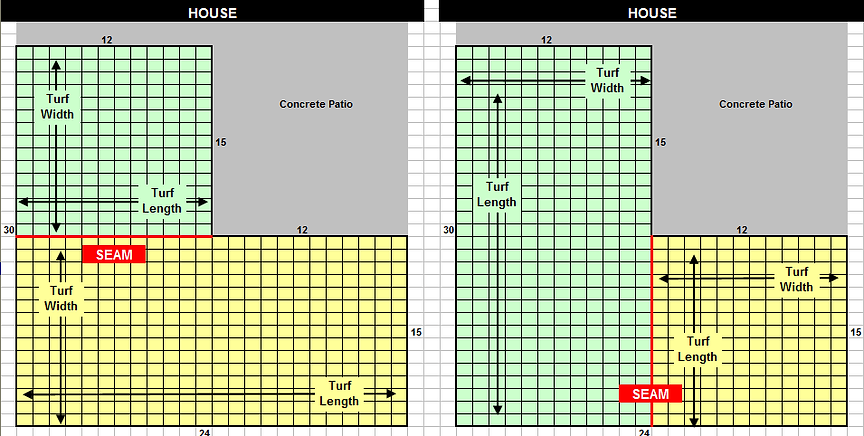You might be thinking "I don't need to plan or design my layout. I'm just laying out synthetic turf." This is far from the truth because any Contractor knows that a good plan will save you a lot of time and money. Your plan doesn't need to be very detailed or professionally crafted, but it does need to provide a roadmap of what needs to be done and to help you determine how much raw materials will need to be purchased.
As you look over your landscape;
An easy installation is an installation that doesn’t require any seams; however, that may not be possible depending on the size and layout of the project area. All turf rolls have fixed widths of 12’ and 15’ wide, depending on the turf model; this is important to know when you are creating your design and determining how you are going to layout the turf.
1. Draw the perimeter of the project area
2. Indicate all trees, shrubs, planters, etc. that will remain in the project area.
3. Indicate where all the sprinklers are at. Although these will be capped for installation, it’s important that you make a record of where they currently are
1. Walk the perimeter and measure all the sides
2. Write the dimensions of the perimeter lengths and widths; this will help with grass placement.
3. Chose the turf model you want to install.
The best way to determine how much turf to order is to create a mock-up and orient the turf within the project area. This will give you the most accurate turf measurements.
Important things to remember:
1. Depending on the turf model you chose the width will be either 12' or 15' wide; therefore, so you should chose the turf model you want to use before you begin orienting the turf. If you are unsure about the turf widths, please contact us and we will be happy to assist you.
2. Place your seams as far away from the house as possible. Play around with the turf orientation; remember, orienting the turf is the most important part of planning.
3. Use the least amount of seams possible
4. Place all seams away from eye site
5. DO NOT use bunt seams. Bunt seams – Are the seams created when you seam the ends of the turf together (width-end to width-end seams). These seams are extremely hard to hide, even for the most trained professional.
See our examples for ideas.

Add Your Heading TexThe Planning phase is complete! You have your plan for the project area including how you are going to layout the grass; now you are ready to calculate the raw materials needed for the job. In the next section, we are going to calculate how much grass you will need to order. All other calculations for sub base and infill we will be included in the manual, along with a list of approved Suppliers. t Here
